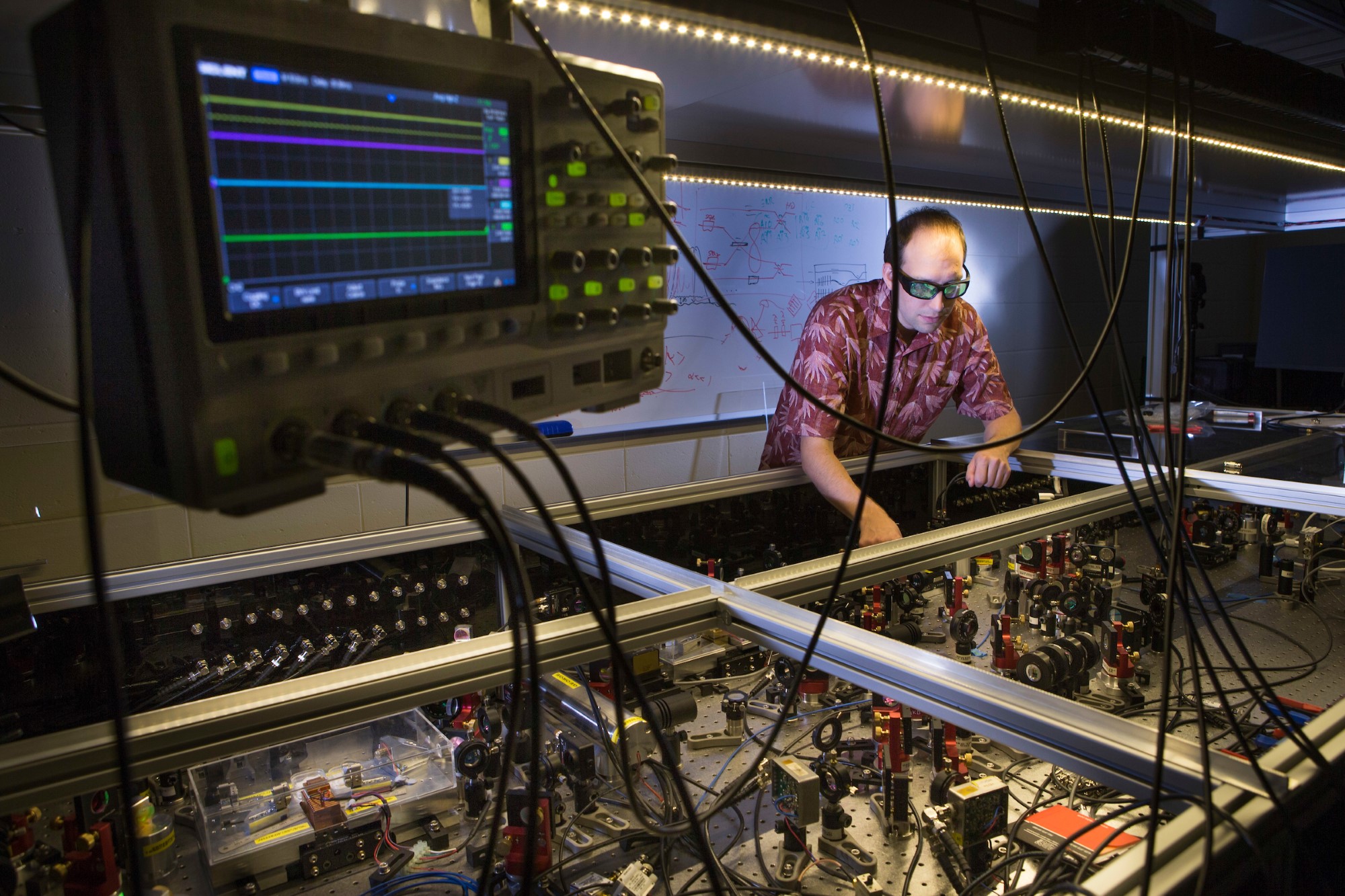
Research projects
Discover the forefront of astronomy and astrophysics through our projects, ranging from deep-space communication systems to groundbreaking adaptive optics. Explore our diverse, ongoing research initiatives shaping the future of space science.
Displaying 1 - 15 of 43 project(s).
This project has two components: developing the science case for the instrument, defining the mission parameters that are necessary to ensure the science goals are achieved; and, for a student so inclined, physically building the telescope and camera system.
Theme
- Instrumentation
- Stellar and planetary astronomy
- Structure and evolution of the Cosmos
Student intake
Open for Bachelor, Honours, PhD students
People
- Associate Professor Bradley Tucker, Supervisor
- Dr Joice Mathew, Supervisor
This project has two components: developing the science case for the instrument, defining the mission parameters that are necessary to ensure the science goals are achieved; and, for a student so inclined, physically building the telescope and camera system.
Theme
- Instrumentation
- Stellar and planetary astronomy
- Structure and evolution of the Cosmos
Student intake
Open for Bachelor, Honours, PhD students
People
- Associate Professor Bradley Tucker, Supervisor
- Dr Joice Mathew, Supervisor
A resolved star formation study of galaxies using TYPHOON
Theme
- Structure and evolution of the Cosmos
In this project you will use existing and new data to understand the nature of filamentary structure in galaxies and how they relate to magnetic fields.
Theme
- Galactic archaeology
- Structure and evolution of the Cosmos
Student intake
Open for Bachelor, Honours, PhD students
People
- Professor Naomi McClure-Griffiths, Supervisor
This project aims to determine what source is dominating in massive galaxies 4 Gyrs ago using MAGPI (MUSE), EMU (ASKAP) surveys and eROSITA public data.
Theme
- Structure and evolution of the Cosmos
Student intake
Open for Honours students
Observatory
People
- Associate Professor Emily Wisnioski, Supervisor
- Dr Andrew Battisti, Supervisor
This project aims to determine what source is dominating in massive galaxies 4 Gyrs ago using MAGPI (MUSE), EMU (ASKAP) surveys and eROSITA public data.
Theme
- Structure and evolution of the Cosmos
Student intake
Open for Honours students
Observatory
People
- Associate Professor Emily Wisnioski, Supervisor
- Dr Andrew Battisti, Supervisor
Study of the statistics of turbulent, magnetised gases, relevant for the structure and evolution of the interstellar medium, the formation and evolution of stars and galaxies, using a combination of supercomputer simulations, theory, analytical calculations, and comparison to observations.
Theme
- Stellar and planetary astronomy
- Structure and evolution of the Cosmos
Student intake
Open for Bachelor, Honours, PhD students
Observatory
People
- Professor Christoph Federrath, Supervisor
In each project, students will utilise data from some of the world’s most powerful radio telescopes, including ASKAP, Parkes, and the Jansky VLA to study the magnetised gas in and around the radio lobes inflated by supermassive black holes.
Theme
- Black hole phenomena
- Structure and evolution of the Cosmos
Student intake
Open for Bachelor, Honours, PhD students
Observatory
People
- Dr Craig Anderson, Supervisor
Magnetic fields are present throughout the universe on all scales: from planets and stars, star-forming clusters and spiral arms, entire galaxies, to galaxy clusters and cosmic filaments.
Theme
- Galactic archaeology
- Structure and evolution of the Cosmos
This project aims to conceptualize a UV astronomical space mission to explore the interstellar medium (ISM) in the Milky Way and nearby Local Group Galaxies. Utilizing recent UV coating and detector advancements, the proposed mission involves high-throughput, compact UV spectroscopic instruments.
Theme
- Instrumentation
- Structure and evolution of the Cosmos
Student intake
Open for Bachelor, Honours students
People
- Dr Andrew Battisti, Supervisor
- Dr Joice Mathew, Supervisor
This project aims to conceptualize a UV astronomical space mission to explore the interstellar medium (ISM) in the Milky Way and nearby Local Group Galaxies. Utilizing recent UV coating and detector advancements, the proposed mission involves high-throughput, compact UV spectroscopic instruments.
Theme
- Instrumentation
- Structure and evolution of the Cosmos
Student intake
Open for Bachelor, Honours students
People
- Dr Andrew Battisti, Supervisor
- Dr Joice Mathew, Supervisor
This technical project aims to develop a new approach for fitting absorption and emission spectra simultaneously, employing Gradient Descent and Bayesian methods.
Theme
- Structure and evolution of the Cosmos
Using both the Wide-Field Spectrograph (WiFeS) on the ANU 2.3m telescope and the 1.4 GHz radio band on the Australia Telescope Compact Array (ATCA), the student will address how the radio jets from the supermassive black hole interact with the Seyfert host galaxy to affect the evolution of the galaxy.
Theme
- Black hole phenomena
- Structure and evolution of the Cosmos
The Milky Way's magnetic field is critical for shaping the structure and evolution of the galaxy, regulating star formation, and transporting cosmic rays. Understanding the interaction between the magnetic field and atomic HI gas is key to unraveling the galaxy's dynamics and evolution.
Theme
- Structure and evolution of the Cosmos
With this project we will be using the newly automated ANU 2.3m telescope and the powerful WiFeS optical spectrograph to perform a time-series measurement of luminous active galaxies (AGN) using the technique of Quasar Reverberation Mapping.
Theme
- Black hole phenomena
- Instrumentation
- Structure and evolution of the Cosmos
